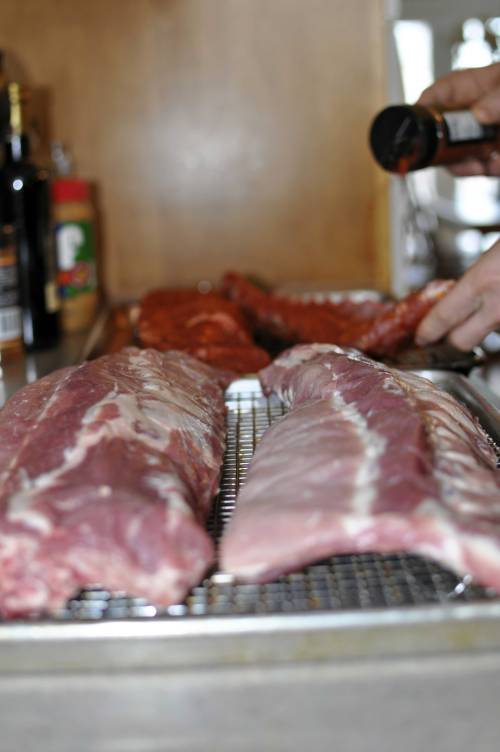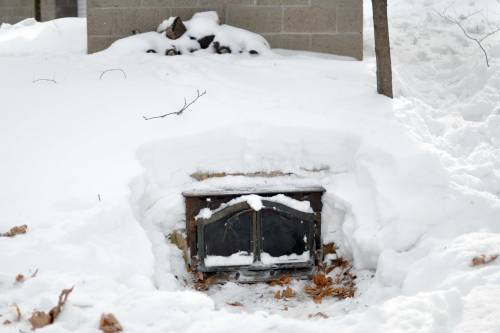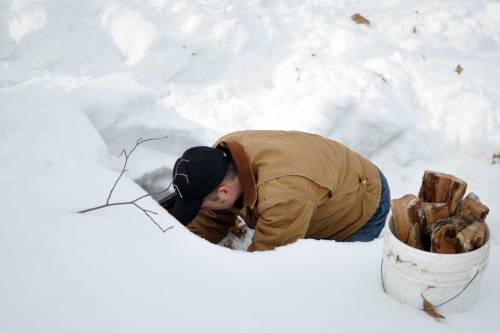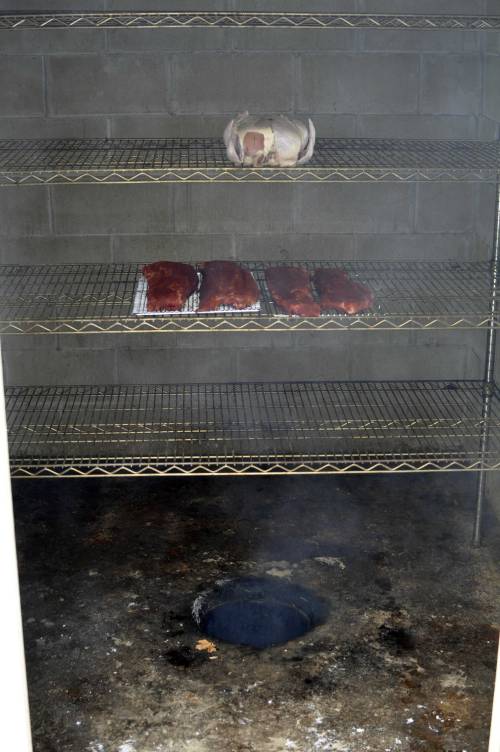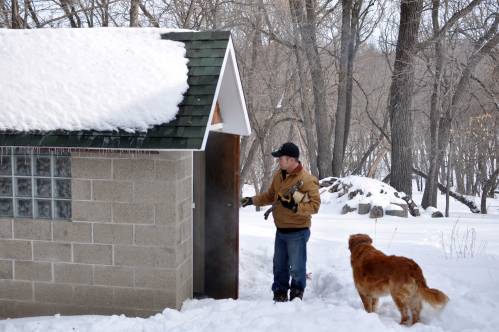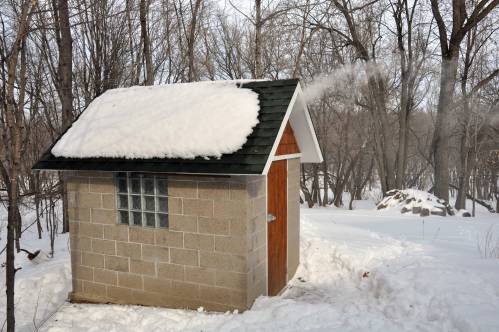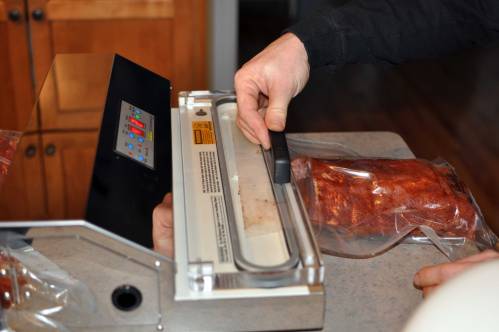We have posted a lot about cold-smoking in the past because that is what we use our smokehouse for and the process we use most often. Every single day the blog receives many visits from people searching for information on building a smokehouse, cold-smoking, or some variation of those searches. But in addition to cold-smoking, we also have a simple barrel smoker for hot-smoking that Jesse’s uncle brought up from Texas. Although we do not fire it up real often, we did make some time this past weekend to smoke a beef brisket. Yum!!
The firebox is heavy gauge steel box construction with an inlet vent control in the door. The smoke box is a 30 gallon drum that is split in half and hinged on one side.

We have the hot smoker located just outside the access door on the garage because this type of smoker requires a lot of attention for feeding fuel and adjusting the vents. The biggest mistake in smoking brisket is to let the fire flare up and get too hot. A good temperature range is 200-225 deg F.
Jesse likes to pat the brisket dry the night before, apply the dry rub, and then let it further dry in the refrigerator overnight. Notice that this brisket is wide and flat, which is not good. We are having a hard time finding a full brisket that has the fat cap still in place. Without the fat cap the brisket tends to dry out much easier.
Jesse placed the brisket on the top wire rack where it is a little farther from the heat source, giving some buffer to prevent over-heating. He also places a pan under the brisket to force the heat to roll around the sides and circulate the smoke.

After getting started, a nice smoke is coming out of the top vent and out of the seams in the barrel. We have heard that some people worry about getting their smoker tight to reduce air leaks, but that is a mistake because you want the smoke to pass over the meat. Making a tight smoker will cut air flow and cause moisture to build up in the smoker, which can promote an acrid flavor.
After attending a class on smoking at a retail store last year, we purchased this handy digital probe thermometer. Although there are 2 dial temp gauges in the barrel itself, one in the bottom and another in the top, the dual read digital probe gives the most accurate readings of what is happening right at the brisket. The dual probe gives the temp inside the meat, and another reading just outside the meat (oven temp). 
In this photo the temp had spiked up to 243 deg F, so Jesse had to turn the vent down to try to cool it back down to the desired range of 200-225 deg F.
When the brisket reaches 170 deg F, Jesse removes the brisket from the smoker, wraps it tightly in tinfoil with a little barbecue sauce, and then places it in the oven at 220 deg F for another 2 hours for finishing. It took about 7 hours of hot-smoking on this day in the barrel smoker to reach the 170 deg F. Adding on the extra 2 hours for finishing in the oven, you can see that cooking a brisket in our barrel hot smoker is a whole day affair. After tasting the finished product however, I think everyone would agree that it was well worth the wait.
–Lynell





